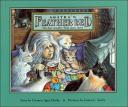“Everything comes from something,
Nothing comes from nothing.
Just like paper comes from trees,
And glass comes from sand,
An answer comes from a question.
All you have to do is ask.”
In Agatha’s Feather Bed: Not Just Another Wild Goose Story written by Carmen Agra Deedy, pictures by Laura L. Seeley this was Agatha’s verse she would recite to the children of Manhattan when they came into her weaving shop wanting to know where her beautiful fabrics came from. Perhaps, little old Agatha forgets her own advice when one cold night she gets a loud bang at her window during her sleep by six angry, cold, naked geese. They want their feathers back that are inside Agatha’s brand new feather bed that are keeping her so warm. Agatha had worked hard to earn that bed, and wasn’t willing to give it up. Instead, Agatha tells the geese to come back to her in three days, and for the next three days Agatha didn’t waste one minute. She closed her shop to the public and starting working. On the third night the geese showed up just as they had agreed, and as they came into Agatha’s bedroom they saw six white, fleecy coats. They were so surprised and thankful. They then looked at Agatha and saw what their coats were made of, Agatha’s hair. They all giggled and on their way out the geese reminded Agatha, “lucky for you and me, hair grows back…just like feathers.”
Curriculum Connections
Agatha’s Feather Bed is a great book to use to introduce many of the economic sections of the Virginia Standards of Learning. It explains that everything comes from something, how people are producers of goods and services, and encourages children to ask questions. It also is a great way to introduce the use of barter in the exchange for goods and services (VA Standards of Learning 2.8). Agatha uses her hair to make the fleecy coats, and the geese gave up their feather for the feather bed. They both decided it was a good trade in the end, because they both got something they wanted. This story teaches a good lesson to students, while telling a humorous story. I would recommend using this book as a read aloud in the lower elementary grade levels.
Additional Resources
Ten Little Pennies– Here is a website with a catchy song that will get children to sing about trade and money. There are other great song options on the main page of this website that will go along with any economic theme.
Lemonade for Sale– The Federal Reserve Bank of Richmond has a website with economic lesson plans, and I found this Lemonade for Sale lesson plan that goes along with the theme of my book. It is a lesson plan teaching children the concepts of producer, consumer, and productive resources. This lesson plan is very interactive with the children and allows them to decide on their own to classify their resources as natural, capital resources, or human resources.
Kids learn market trade– “Pittsburg-area fourth graders present their product at SIFE’s Just Imagine Nation.” A fourth grade class learns about the market economy of four regions of the U.S. Students are divided into teams representing the four regions of the U.S. and work together to come up with a product that is unique to their region. I am very happy I found this website, because this is a great idea that I hope to use in my classroom one day.
Book: Agatha’s Feather Bed: Not Just Another Wild Goose Story
Author: Carmen Agra Deedy
Illustrator: Laura L. Seeley
Publisher: Peachtree Publishers, LTD.
Publication Date: 1991
Pages: 28
Grade Range: 1-3
ISBN: 1-56145-096-0

